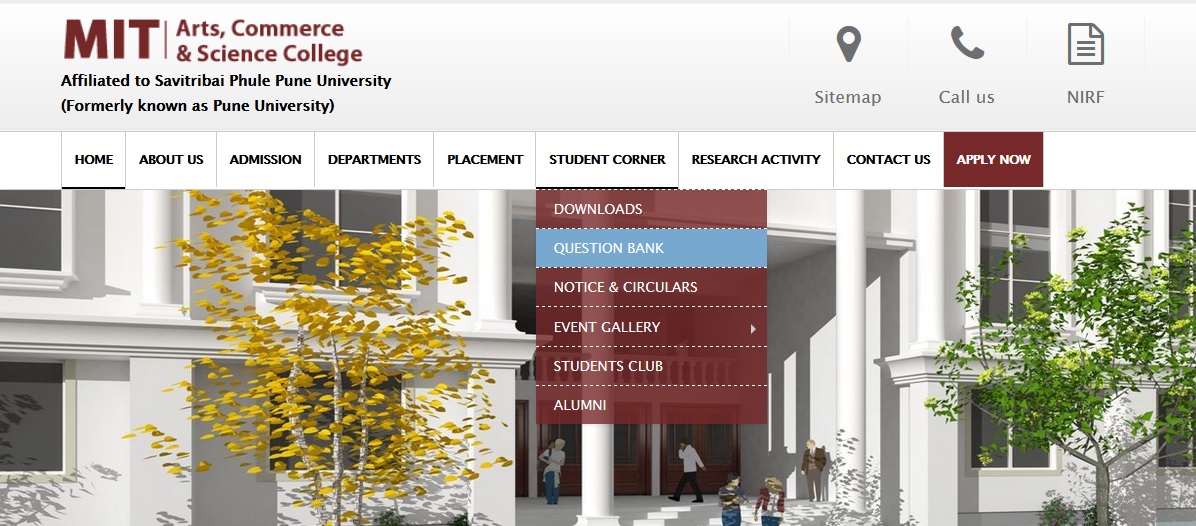CS203 Data Mining and Data Warehousing M.SC Question Bank : mitacsc.ac.in
Name of the University : University of Pune
Name of the College : MIT Arts Commerce & Science College
Degree : M.SC
Department : Computer Science
Subject Code/Name : CS-203 Data Mining and Data Warehousing
Year : I
Semester : II
Document Type : Question Bank
Website : mitacsc.ac.in
Download Model/Sample Question Paper : https://www.pdfquestion.in/uploads/mitacsc.ac.in/3852.-Data_mining_Question_Bank.pdf
MITS Data Mining & Data Warehousing
Chapter I :
Introduction to Data Mining
(1) Explain basic data mining tasks with an example.
(2) Give details on data mining versus knowledge discovery in databases.
Related : MIT Arts Commerce & Science College CS204 XML and .NET Programming M.SC Question Bank : www.pdfquestion.in/3849.html
(3) Discuss data mining issues.
(4) What is data mining metrics-
(5) What are social implications of data mining-
(6) Give an overview of Applications of data mining.
Chapter II – :
Introduction to Data Warehousing
(1) Explain : data warehousing, OLAP.
(2) What do you mean by machine learning-
(3) Explain pattern matching.
(4) (a) Draw a snowflake schema diagram for the data warehouse.
(5) Suppose that a data warehouse consists of the four dimensions, date, spectator,
(6) A data warehouse can be modeled by either a star schema or a snowflake
(7) Discuss issues to consider during data integration.
(8) Write a note on the Architecture of Data Warehousing.
(9) Explain the need of Data Processing.
(10) Explain the terms related to Data Processing-
(a) Data Cleaning (b) Data Integration & Transformation
(c) Data Reduction

Chapter III :
Data Mining Techniques
(1) Explain frequent item-set algorithm.
(2) Give an example for Apriori with transactions and explain Apriori-genalgorithm.
(3) Explain sampling algorithm with an example.
(4) The Apriori algorithm uses prior knowledge of subset support properties.
(a) Prove that all nonempty subsets of a frequent item-set must also be frequent.
(b) Prove that the support of any nonempty subset s` of item-set s must be at least as great as the support of s.
(c) Given frequent item-set l and subset s of l, prove that the confidence of the rule “s` → (l-s`)” cannot be more than the confidence of “s → (l-s)”, where s` is a subset of s
(d) A partitioning variation of Apriori subdivides the transactions of a database D into n non-overlapping partitions. Prove that any item-set that is frequent in D must be frequent in at least one partition of D.
(5) Define a frequent set. Define an association rule.
(6) Define a FP-tree. Discuss the method of computing a FP-tree.
Chapter IV :
Classification & Prediction
(1) Briefly outline the major steps of decision tree classification.
(2) Why is tree pruning useful in decision tree induction- What is a drawback of
(3) Give a decision tree, you have the option of
(a) converting the decision tree to rules and the pruning the resulting rules. Or
(b) pruning the decision tree and them converting the pruned tree to rules.
(4) Why is naïve Bayesian classification called “naïve”- Briefly outline the major
(5) Explain with an example Bayesian classification.
(6) Explain decision tree-based algorithm.
(7) What do you mean by CART-
(8) Give an example for classification using prediction.
(9) Write a note on linear regression/non-linear regression.
(10) Some non-linear regression models can be converted to linear models by
Chapter V – Accuracy Measures :
(1) Explain the following accuracy measures-
(a) Precision (b) F-measure (c) Confusion matrix
(d) Cross-validation (e) Bootstrap
Chapter VI – Software of Data mining and Applications of data mining :
(1)Write a note on Applications of data mining.
Chapter VII – Clustering :
(1) Give examples for different clustering attributes.
(2) Give an example for hierarchical algorithms.
(3) Give an example for K-means clustering.
(4) What is clustering- What are the different clustering techniques-
(5) Write a note on Hierarchical clustering.
Chapter VIII – Brief overview of advanced techniques :
(1) What are the different types of web mining?
(2) How is web usage mining different from web structure mining and web content mining?
(3) How is text mining related to web mining? What are the techniques of text mining?
(4) How do you extract structures from unstructured text data? What features are extracted in this process?
(5) Which frequent item-set mining is suitable for text mining?
(6) What are the differences between mining techniques of structured data, semistructured data and unstructured data?
(7) Write a note on Text mining.
(8) Explain Web mining.